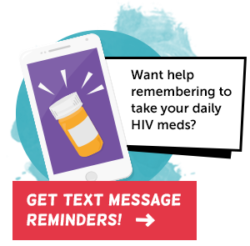HIV treatments, in the form of anti-retrovirals (ARVs), are used by both HIV-negative guys and HIV-positive guys as a way of controlling HIV and reducing HIV infections in the community.
The science is clear. When a person living with HIV is effectively on treatment and has an undetectable viral load, they can’t transmit HIV through sex. Times have changed. And this is great news!
These days, people working around HIV are emphasizing that the use of anti-retroviral drugs (ARVs) is one of the most important parts of the global response to HIV.  HIV-positive guys take anti-retrovirals for their health, which reduces viral load and transmission as well. Some HIV-negative guys are taking ARVs in the form of PrEP or PEP as a way of reducing the chances of getting HIV.
HIV-positive guys take anti-retrovirals for their health, which reduces viral load and transmission as well. Some HIV-negative guys are taking ARVs in the form of PrEP or PEP as a way of reducing the chances of getting HIV.
Why is treatment for HIV-positive guys a form of prevention? ARVs can reduce an HIV-positive guy’s viral load, and when his viral load is undetectable he can’t transmit HIV through sex. When more guys have low or undetectable viral loads, that means less HIV transmission in the community.
HIV-negative guys also take HIV treatments to help them from getting an HIV infection, either as an ongoing treatment (PrEP), or after a possible exposure to HIV (PEP). In recent years, more evidence has shown that the use of ARVs by HIV-negative guys has a potential to reduce overall HIV infections in the community.
 Although there are still some misunderstandings about HIV in the gay community, more people are recognizing that the use of HIV treatment by gay men, regardless of HIV status, plays an extremely important role in HIV prevention across the board.
Although there are still some misunderstandings about HIV in the gay community, more people are recognizing that the use of HIV treatment by gay men, regardless of HIV status, plays an extremely important role in HIV prevention across the board.
Check out CATIE’s fact sheet about treatment, including its use as prevention, and about viral load and transmission if you’re interested in learning more.
